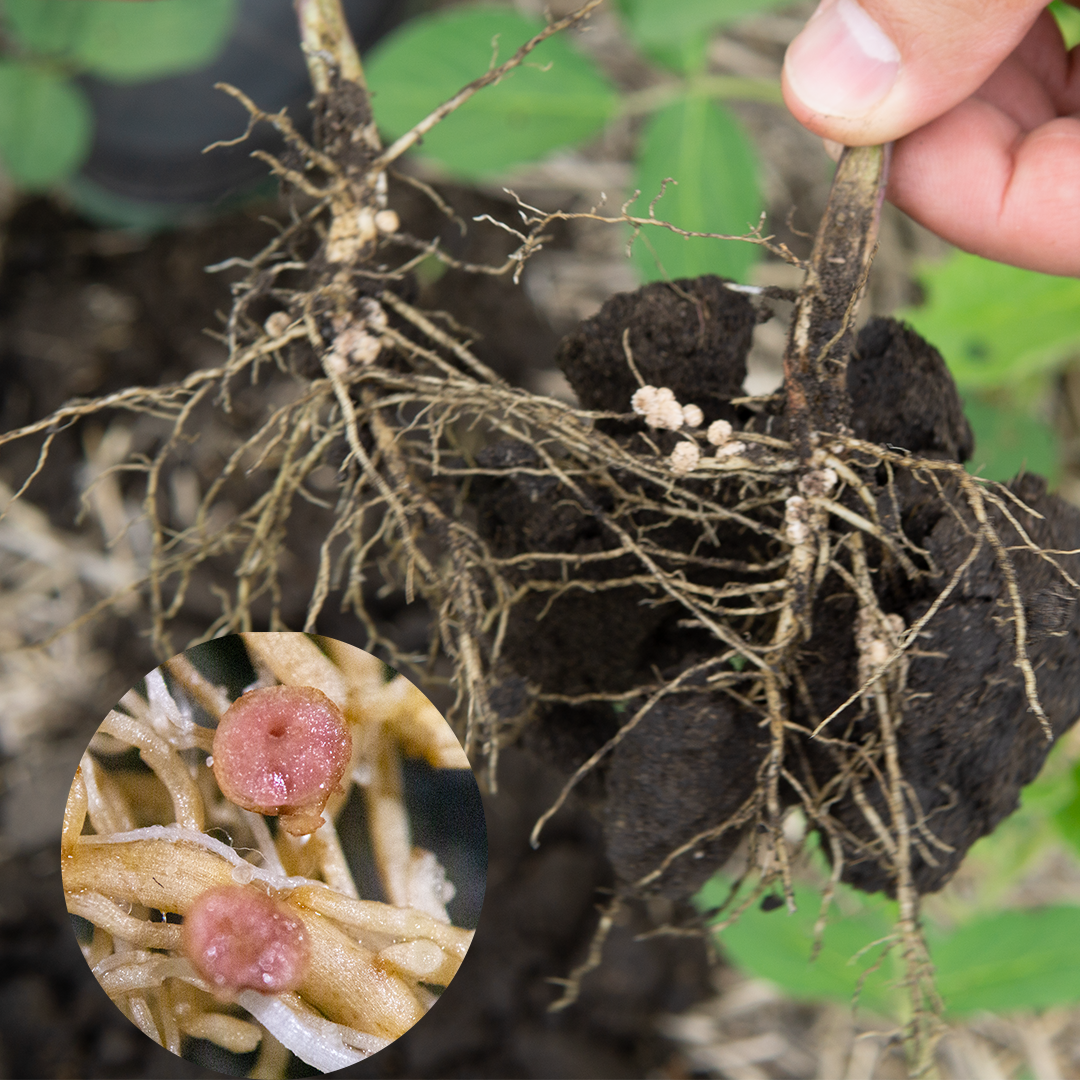It’s the time of year when farmers will be digging up their legume plants to check for nodulation. Today biologicals are the buzzword on everybody’s lips, but it is important to remember that nodule forming legume inoculants were the first “biologicals” And they have been boosting sustainability and producing ROI for farmers for over a century.
In this week’s Growing Possibilities blog we will cover:
1. How to check for nodulation on legumes.
2. Reasons legumes can fail to nodulate.
3. Using premium inoculant technology to boost ROI.
Nodules on the roots of all legume crops are the result of a symbiotic relationship between leguminous plant roots and nitrogen-fixing bacteria. About 4-6 weeks after planting, nodules should begin to form on legume roots. To check for nodulation, carefully dig out a plant with the surrounding soil still intact. Gently wash or break away soil from the roots (dipping the plant into a bucket of water is a good way of removing soil) and look for nodules adhered to the plant roots. Slicing open the nodules should reveal pink/red tissue, indicating that nitrogen fixation is occurring and your rhizobacteria are active.
If you are not seeing nodulation There are a variety of reasons why nodules may fail to form following inoculation. These include:
• Low soil pH (<5.5) (1).
• High soil pH (≥8) (2).
• Cool soil temperatures (3).
• The presence of high background levels of N. High levels of available soil nitrogen (more than 50 lb/acre) will result in your crop preferentially using nitrogen from the soil, inhibiting nodulation (4).
• High soil salinity (5).
• Soil compaction. Compacted soil will prevent aeration of soil and cause a lack of nitrogen for bacteria to fix.
• Nutrient deficiency or toxicity, including phosphorous, potassium, iron, molybdenum, manganese, calcium, and zinc (5).
Alternatively, it could be because of a lack of rhizobacteria in the soil or the presence of the wrong type of rhizobacteria. The best way to ensure nodulation and the cheapest crop insurance you can buy is still inoculants (5).
Some farmers choose not to inoculate due to the presence of rhizobium in the soil. Studies have shown that even in mature fields that have grown soybeans for years inoculating annually can still provide a benefit. Work from Purdue’s Ellsworth Christmas has shown that inoculating soybeans over time produces a positive ROI of 3:1 (5).
Today we see a trend towards purchasing seed that has been pre-inoculated. But if you farm soybeans or pulses trusting your inoculant selection to someone else could mean leaving money on the table. It is always important to ask what quality of inoculant was used to treat the seed. Premium inoculants like XiteBio® SoyRhizo® and XiteBio® PulseRhizo® have shown in 100’s of trials that they consistently beat competitors by at least 1 bu/ac (6). “While this might not sound like a lot in raw numbers it is enough to give XiteBio products an ROI of 5:1 at today’s prices,” says Dave McAulay XiteBio’s Western Canadian Sales Manager. This offsets the cost of choosing premium by producing a higher return than using a generic inoculant.
If you have any questions about nodulation or how premium inoculants can boost your ROI, please give us a call at 1-855-XITEBIO.
1. Bjederbeck VO, Bjorge HA, Brandt SA, Henry JL, Hultgreen GE, Kielly GA, Slindard AE. 2005. Soil improvements with legumes. Ed: BJ Green, VO Bjederbeck. Government of Saskatchewan. Available on-line at: http://www.agriculture.gov.sk.ca/Default.aspx?DN=4b50acd7-fb26-49a9-a31c-829f38598d7e
2. Staton M. 2014. Identifying and responding to soybean inoculation failures. Michigan State University. Published 4 Feb 2014.
3. Conley S. 2015. Non-nodulating soybean questions. Agri-View Briefs. Published 23 July 2015. Available online at: http://www.agriview.com/briefs/crop/non-nodulating-soybean-questions/article_9b2f79e6-dd9d-5277-b414-4e80a63fd84f.html.
4. https://www.saskatchewan.ca/business/agriculture-natural-resources-and-industry/agribusiness-farmers-and-ranchers/crops-and-irrigation/soils-fertility-and-nutrients/inoculation-of-pulse-crops
5. https://www.farmanddairy.com/news/inoculants-support-soybean-farmers/3535.html
6. https://xitebio.ca/xitebio-soyrhizo-premium-liquid-inoculant/


